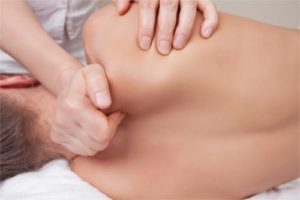Description
Course Introduction
Massage is the manipulation of the body’s soft tissues with specific techniques to promote or restore health. Massage therapists use their hands to detect and treat problems in the muscles, ligaments and tendons in the body’s soft tissue.
Massage as a therapy has evolved out of one of our most instinctive desires – the desire to touch and be touched. We touch each other for many reasons: to show love, offer security, suggest empathy….but also to make us feel better. As a species we can exist without many things, but physical contact is not one of them.
Over the years much evidence has been collected to prove the necessity of touch and the benefits of therapeutic massage. Some references from the early 1900’s show that institutionalized orphans with a normally fatal wasting disease called marasmus did not die when they were regularly touched.
Massage therapy has had something of a chequered history. It is one of the oldest therapies in the world, predating acupuncture, and was popular with the Greeks and Romans. In fact, up until the Middle Ages, it played a vital part in healthcare. But the Catholic Church consigned it to the realm of the sinful and left it with a rather seedy image that the more recent ‘massage parlours’ only served to increase. It is an image that modern therapists have worked hard to dispel.
Most therapists, and certainly those who work holistically, believe that regular body massage can release emotional tension and promote physical health, gradually restoring the whole person to balanced health. Massage Therapy is not limited to just Swedish Massage, it also forms the basis of other therapies such as aromatherapy, shiatsu and physiotherapy, and plays an important part in Chinese and Ayurvedic medicine, so Swedish Massage is only the start of a great career.
- History of Massage
- Healing and Inner Balance
- Clinical Studies
- Building Massage Muscles
- Rules and Danger Zones
- Massage Techniques
- Bad Moves
- Directional Terms
- Reactions After Massage
- Precautions and Contraindications
- Facial Massage
- Directional terms
- Setting the Atmosphere
- Preparing For and Performing the Massage
- Bones and Muscles of the Body
- After Care Advice
- Assessing the Treatment
- Record of Treatment,
COURSE PROCEDURE
- THEORY BOOK
- STEP BY STEP WRITTEN PROCEDURE
- TRAINING VIDEO
- MULTIPLE CHOICE TEST
- PRODUCT AND EQUIPMENT LIST










Reviews
There are no reviews yet.